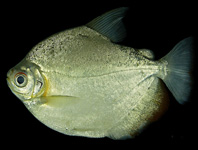Abstract
The Apioceridae (Diptera) are relatively large asiloid flies with just over 140 described species worldwide. They are closely related to both Mydidae and Asilidae, and most species are found in Australia and North America, however a handful are found in both southern Africa and southern South America. The immature stages of only one species is known, the Australian beach dune inhabiting species Apiocera maritima Hardy. Like most asiloid larvae, apiocerid larvae are assumed to be predators of other soft-bodied invertebrates in the soil. Anatomically the larvae and pupae are similar to those of closely related families. The larvae are elongate, cream-coloured, subcylindrical and with a small, well-sclerotised head capsule. The pupa has a number of robust processes and spines on the head capsule and rows of distinctive bristles on the abdominal tergites. These spines and bristles are used by the pupa to drill upwards out of the soil prior to adult emergence. Here we describe the late instar larva and pupa of the Australian species A. striativentris Paramonov and compare them to the larva and pupa of the previously described species. Apiocerid larvae have distinctive, rounded abdominal segments 2-5 that may be diagnostic for the family.
References
Courtney, G.W., Sinclair, B.J. & Meier, R. (2000) Morphology and terminology of Diptera larvae. Contributions to a Manual of Palearctic Diptera, 1, 85–161.
Cazier, M.A. (1963) The description and bionomics of a new species of Apiocera, with notes on other species (Diptera: Apioceridae). Wasmann Journal of Biology, 21 (2), 205–534.
Dennis, D.S., Barnes, J.K. & Knutson, L. (2008) Pupal cases of Nearctic robber flies (Diptera: Asilidae). Zootaxa, 1868, 1–98.
English, K.M.I. (1947) Notes on the morphology of Apiocera maritima Hardy (Diptera: Apioceridae). Proceedings of the Linnean Society of New South Wales, 71, 296–302.
Evenhuis, N.L.P., Pont, T., Pont, A.C. & Thompson, F.C. (2009) The Biosystematic Database of World Diptera. Available from: http://www.diptera.org/FamilyTables.php (accessed 1 January 2017)
Ferguson, D.J. & Yeates, D.K. (2018) Immature stages of two Australian Mydas flies (Diptera: Mydidae) of the genera Diochlistus and Miltinus. Austral Entomology.
https://doi.org/10.1111/aen.12326
Paramonov, S.J. (1953) A review of Australian Apioceridae (Diptera). Australian Journal of Zoology, 1 (3), 449–539.
https://doi.org/10.1071/ZO9530449Paramonov, S.J. (1961) Notes on Australian Diptera (XXXII-XXXVI). XXXV. Some new apiocerids. Annals and Magazine of Natural History, Series 13, 4, 107–110.
https://doi.org/10.1080/00222936108655785Peterson, B.V. (1981) Apioceridae. In: McAlpine, J.F., Peterson, B.V., Shewell, G.E., Teskey, H.J., Vockeroth, J.R. & Wood, D.A. (Eds.), Manual of Nearctic Diptera. vol.1, Ottawa Research Branch, Agriculture Canada, pp. 541–548.
Wiegmann, B.M., Trautwein, M.D. & Winkler, I.S. (2011) Episodic radiations in the fly tree of life. In: Proceedings of the National Academy of Sciences of the United States of America, 108, 5690–5695.
https://doi.org/10.1073/pnas.1012675108Yeates, D.K. (2002) Relationships of extant lower Brachycera (Diptera): a quantitative synthesis of morphological characters. Zoologica Scripta, 31, 105–121.
https://doi.org/10.1046/j.0300-3256.2001.00077.xYeates, D.K. & Oberprieler, S.K. (2013) Review of the Australian Apiocera minor Norris species-group (Diptera: Apioceridae) with a revised key to species. Zootaxa, 3680 (1), 195–209.
https://doi.org/10.11646/zootaxa.3680.1.13

